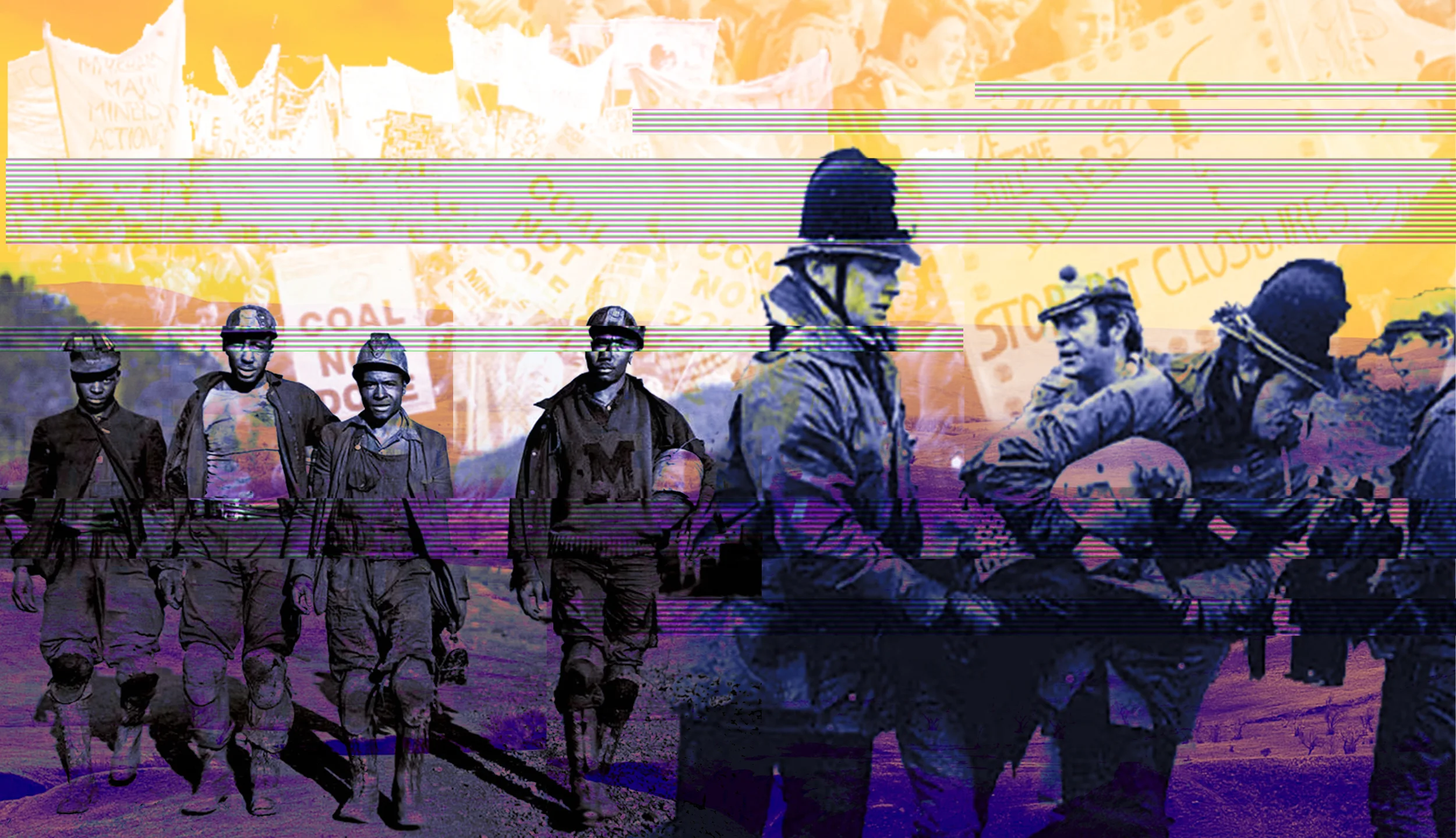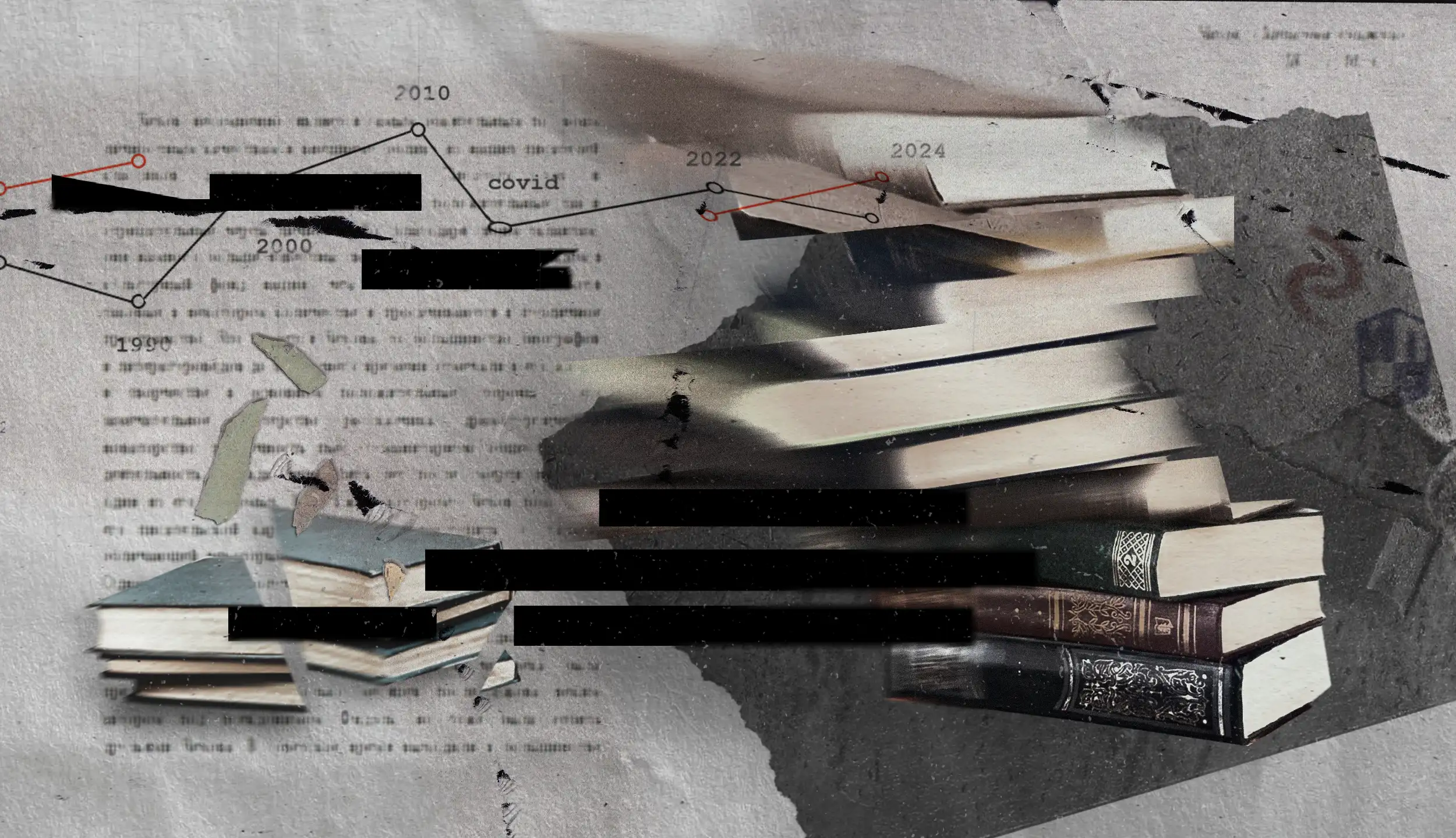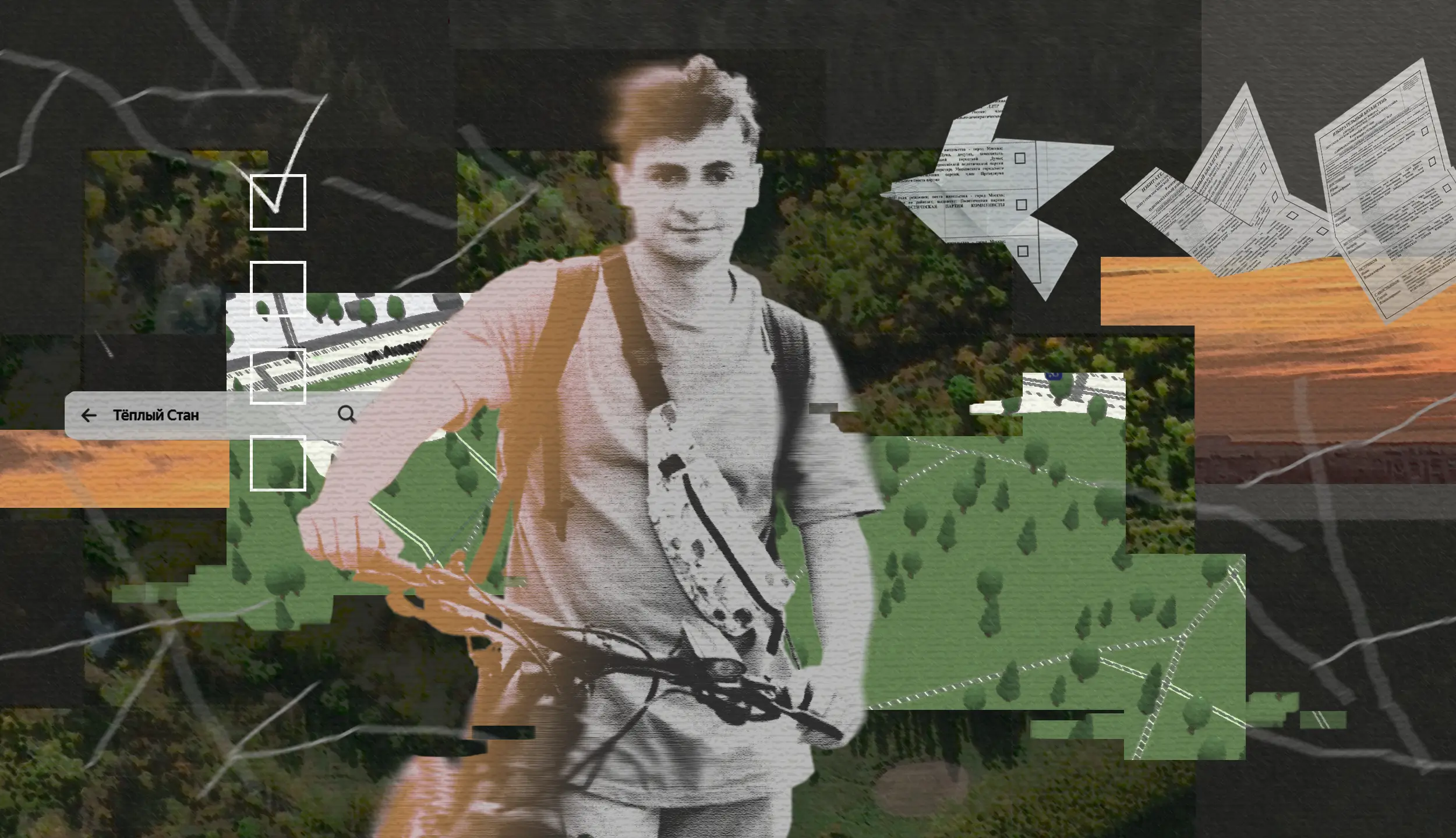Hey, lay your burden down,
Seems the last day of the miners’ strike
Was the Magna Carta in this part of town
(Pulp, Last Day of the Miners’ Strike)
There is an article that deserves to be written. A wistful but combative text about the fortieth anniversary of the one-year British miners’ strike that lasted from March 6, 1984 to March 3, 1985. An epoch-making industrial action, already understood at the time as the last great rebellion of the British labor movement. The ultimate showdown between the solidarity principle of proletarian cohesion and Margaret Thatcher’s neoliberal monetarism, ending in the destruction of the former and the imposition of the latter. And also, an example of how far the bourgeois media and the state authorities in the oldest democracy in the West were willing to go to achieve this result. Such an article could lead to a plea for a revival of the collective spirit of the strikers, in a message of hope that this form of mobilization is still possible and that we can learn from the mistakes of the 1980s and avoid them in the struggles of the future. But sometimes the story you’re looking for isn’t quite the one you find.
Instead, we find ourselves in the living room of a small abode in the seaside town of Whitstable, in Kent. It is part of a settlement of houses owned by the local community, in a cul-de-sac at the end of a tangle of bumpy streets whose desolate pavement makes the visitor sense as soon as they arrive that this very community doesn’t give much thought to the people who live here. The tenant of the small house is a widower in his mid-seventies named Tom Varley. He has snow-white hair, a mustache, a dry sense of humor and a Northern English accent. He can’t get rid of it, even though he’s been living here in the south of England for almost three decades now. His boxy upper body suggests an athletic past. In his last decades of work, Tom ran a small fitness center not far from here. “It didn’t make me rich,” he says, “but it paid the bills.” His muscle power, however, came from elsewhere. From his former life as a soldier and miner, born and raised in a village called Airedale, east of the West Yorkshire town of Castleford, next to the coal mine in neighboring Fryston. “My whole family worked there, my father, my grandfather,” says Tom. “That was all there was for us. The mine.”
At fifteen, Varley left school, spent six months in the coal mine, felt the desire to “travel around a bit,” and did the only other option available to a young man of his background: he enlisted in the army. After twelve years of military service, he returned home in 1973 and went straight back to the mine, where he worked until it closed in December 1985. “If you told me: ‘The mines will be opened again tomorrow,’ I would be there again tomorrow,” he says. “No matter how old I am. You’ll never find friends like you had there again. It was dirty, dangerous, but it was a brotherhood. In the colliery in Fryston everyone knew everyone. We had played together as children in the village, went to school together, worked together, died together. And all the houses there belonged to the mine.” This in turn, like all the mines, belonged to the National Coal Board, which was nationalized in 1947 under the post-war Labour government of Clement Attlee.
There were fourteen coal mines and three power stations in Varley’s region, covering an area of just under ten square miles. His wages were 76 pounds a week, the equivalent of around 360 euros in today’s money. “That sounds like a lot,” he says, surprisedly, “but I also worked as a fitter right on the mining front. I placed the supports that held the roof of the tunnel. That required skill. When the cutting machine was used to mine two feet of coal, the support poles had to be moved so that the machine drivers were protected. Our mine was 700 meters underground. You rode down in the cage, then you had to take two trains, then walk two miles before you even got to work. We first took the diesel train, then the Man-Rider, which was a wagon pulled by an endless rope. Then we stripped down to our underwear. And that’s all we wore because it was so hot down there. So we walked the rest of the way to the mining front, did our shift there and walked all the way back. You went down clean and when you came out you were black. You spent a good twenty minutes in the shower after that.”
Varley picks up his smartphone and, with crooked but firm fingers damaged by hard work, taps his way to the Facebook group of ex-miners and their relatives: “Let me show you what it looked like there. We lost three men, all on the same mining front, number 79. Three young boys. Accidents happened. But it was all part of the job. When you go to war, you expect sacrifices. We weren’t born to sit behind a desk.”
He shows me black-and-white pictures of men with blackened faces on his phone. They look like they come from another century, and it occurs to me: they do. “There are a few of the guys I worked with. There aren’t many of them alive now.” Died because of the consequences of the work? “Yes. I also have COPD (chronic obstructive pulmonary disease) from coal dust. We didn’t have masks. I think it would all be a lot safer these days,” Varley adds, as if to justify why he would still go back into the pit if the impossible happened and the past came back.
Thatcher’s revenge
But as it turns out, working in the mine isn’t the only part of his life he misses. “I would go on strike again tomorrow,” he says with exactly the same heaving tone of conviction with which he had just previously expressed his willingness to work. An apparent paradox, because the miners’ strike in 1984 was not about better pay or working conditions, but rather about stopping a program that had already been started by the conservative government under Prime Minister Margaret Thatcher and the National Coal Board to close coal mines that had been declared unprofitable. “It wasn’t just about our jobs,” explains Varley, “but about the future of our children and grandchildren. We always thought the mines would be there for them. We used the only means available to us and that was the strike. Okay, it was a long battle, but it was worth it. Most of those who went on strike back then would do it again.”
However, this is also the point at which the nostalgia surrounding the miners’ strike becomes absurd, as it also embodies a kind of victim cult: the celebration of a glorious defeat that seems completely inevitable because of the temporal distance. “Thatcher had only one intention: to destroy the miners,” says Varley. “She blamed us for overthrowing the Tory government in 1974.” The miners had already gone on strike once in January–February 1972, back then for higher wages. Their seven-week walkout caused severe power outages in the middle of winter. “We cost Ted Heath his re-election,” says Varley. Thatcher took revenge for this after Labour’s interregnum between 1974 and 79. “During the years she was in power, she had coal reserves built up in the power plants. We knew that. She used it as a threat to the strikers. And I think Scargill, a fabulous guy, fell for it.”
Arthur Scargill, head of the National Union of Mineworkers (NUM), demonized by the British media, hated by the Labour Party leadership, and revered to this day by large sections of its base as the indomitable leader of the strike, probably wasn’t a gifted tactician, no matter what one thinks of him. Nine days after the workers at the Cortonwood coal mine, South Yorkshire, refused to work in protest of its announced closure, Scargill declared an official union-wide strike on March 12, 1984, at the beginning of spring, knowing that coal demand would fall sharply in the next few months. And without the support of a national vote of union members.
“He went about it the wrong way,” admits Varley. “But we went along with it because we knew what it was about. Many people said we should have held another vote. Then a majority would probably have voted for ‘work to rule.’ We would have continued to be paid, but we would have stopped the conveyors at every opportunity and no coal would have come out of the mines. Reserves would have fallen. It may have been a mistake to go on strike straight away, but that was what we had decided on.” And so the powerful miners’ union maneuvered itself with heroic stubbornness directly into the open trap of a Conservative government that was prepared for the conflict.
Instead of his £76, Varley was now earning just £5 a week, paid by the union for his work as a mobile picketman. “We also traveled by bus as ‘Flying Pickets’ to places where we knew something would happen.” What exactly happened in these confrontations between pickets and strikebreakers, so-called “scabs”, is still a controversial topic today. “We stopped people at the gate to the pit,” says Varley. “Don’t believe what the government or the police tell you. All we did was yell at people.”
In fact, there was significant violence in some places during the strike, even with isolated fatalities, both among scabs and picketers. The true substance of these internal struggles lay not even in their means, but in the sheer divisive energy of the underlying moral polarization. On X there is an account called @Miners_Strike, a virtual diary of the strike. One can find a TV interview with two workers from Varley’s mine in Fryston, recorded on February 11, 1985, just before the end of these epic events. In the interview, they express their opinion about nine out of 1,100 comrades who gave in to financial pressure and returned to work. “These people,” says one of the two strikers, his eyebrows raised in a sign of urgency, “are actually slitting all of our throats.” Just three months before the interview, in Varley’s village of Airedale, a strikebreaker was hospitalized after he had been beaten with baseball bats in his own home while his pregnant wife and children hid from the intruders in the floor above. Two men from Wakefield, just half an hour away, were later convicted.
The Battle of Orgreave
To undermine local loyalties, the National Coal Board, under the leadership of the hardliner Ian MacGregor, personally appointed by Thatcher, had begun to smuggle in strikebreakers by buses. “That’s why we all went down to Nottingham,” says Varley. “They had sided with Thatcher there and returned to work. They had been promised that they would be spared in return. But after that, their pits were still abandoned. You know what governments are like. They couldn’t lie straight in bed. In any case, we didn’t intimidate them. Okay, there’s always a bunch of crazy people, people causing trouble. But nine times out of ten, the pickets dealt with such things themselves. They didn’t need the police to do it.”
It didn’t take long, however, for the striking miners to realize that the police hadn’t come to act as a mediator. “At the beginning we thought we could win,” says Varley. “But then it just became absurd because we had to fight not only against the government, but also against the police, even though we didn’t want to. But they provoked us until we fought back. Not the local police, they were on the picket line with us. After all, they knew that they would have to get along with us even after the strike. But the police from the south, from Devon, Cornwall, and London! They brought them here just to heat us up. On payday they always walked past the picket lines waving their pay slips. They earned hundreds of pounds. Many of them were actually soldiers. One day there was a long line of men in blue uniforms, and I walked over and said to the sergeant, ‘Oi, they’re squaddies!’” Varley, the ex-Soldier, had recognized the special army boots of the uniformed men, who also had no service numbers on the shoulder boards.
The legendary Battle of Orgreave on June 18, 1984 between miners and police has long since entered the realm of national myth. Five thousand pickets organized by the NUM had gathered to block coal deliveries to the coking plant at Orgreave. They were faced with an overwhelming force of six thousand police officers who first surrounded them in a sloping field between a road and a railway line, then charged straight at them. A mounted unit galloped into the crowd brandishing clubs and drove the miners toward the police waiting at the bottom of the hill, armed with clubs, shields, and attack dogs. After a deceptive lull, the police chased the strikers into the streets of the village of Orgreave. The images of unrestrained, bloody police violence have since acquired iconic status, but were not visible on BBC television reports at the time. Instead, the editorial depicted the battle as if the police had responded to stones being thrown by provocative strikers. “The media was terrible, they crucified us,” remembers Varley, who in those days was not the only one to lose all trust in public broadcasting, which presented itself as impartial, with consequences that continue to this day. “I wouldn’t even believe them if they told me it was Monday. BBC News makes the most distorted news you can see on television.”
Despite the persistent urging of the Orgreave Truth and Justice Campaign, there was never an official investigation or legal consequences for the Orgreave slaughter. However, various statements by officials and journalists involved at the time suggest that there was no need for a coordinated conspiracy to suppress and denigrate the striking workers. The consensus prevailing in the media and political establishment that the government simply could not lose this fight was enough to achieve this. And yet, the overall direction of the 80s was by no means as clearly defined as it is often portrayed in the political and pop-cultural rearview mirror today. While Thatcher’s monetarism plowed its way across the mainstream in a power suit with wide shoulder pads, there also existed a parallel mid-eighties’ counter-world of rolled-up jeans, Doc Martens, semi-ironic CCCP sweaters, and red stars on the collar of donkey jackets.
This certainly had relevance in a phase of the Cold War in which Ronald Reagan seemed more threatening to world peace than a geriatric Soviet government. Even Sting captured this zeitgeist at the time and sang in his single “Russians”: “Mister Reagan says, ‘We will protect you’ / I don’t subscribe to this point of view / Believe me when I say to you / I hope the Russians love their children too.”
As an ideologically disinterested contemporary witness, Varley remembers an aspect of the strike that one rarely hears about today: “I think what tipped the scales was Christmas 1984. I have to say this: if it hadn’t been for the Russians, the children wouldn’t have had Christmas. They really supported us. Why, I don’t know.” So while food and gift packages sponsored by the Eastern Bloc landed in Yorkshire, Wales, Scotland, and Kent, at the same time, under Bob Geldof and Midge Ure’s aegis, Duran Duran, Spandau Ballet, and others sang for Band Aid’s “Do They Know It’s Christmas” and collected donations to alleviate the famine in Ethiopia. As a countermovement to the selfish yuppie boom, the solidarity movement of the 1980s radiated irresistibly in many directions at once.
Not only a certified socialist like Billy Bragg played benefit gigs for the miners, but also The Clash, Orange Juice, The Style Council, Aztec Camera, and Everything but the Girl, not forgetting the one organized by the group Lesbians and Gays Support the Miners with Pits and Perverts and Bronski Beat as headliners. The yellow “Coal Not Dole” sticker, which was given as a thank you for a donation to the strike fund, was a visible accessory on the streets of London in 1984–85. Just because newspapers and television unanimously condemned the rebellious miners did not mean that they had no sympathy among the youth or the creative community. On the contrary, the Miners’ Strike politicized students from bourgeois backgrounds and gave the old left-wing intellectual clichés about solidarity with the working class a very real dimension.
Target group for right-wing populists
It seems all the more strange at first that the British media, on the occasion of the recently celebrated fortieth anniversary, allowed itself to be carried away with surprisingly balanced, if not generally positive, portrayals of the Miners’ Strike (not least the BBC documentary Miners’ Strike: A Frontline Story and the Channel Four series Miners’ Strike 1984: The Battle for Britain). Certainly, in the meantime, films like Brassed Off (1996), Billy Elliot (2000), or Pride (2014), had various references in the work of Ken Loach, but also Jeremy Deller’s reconstruction Battle of Orgreave (2001) and the television series Sherwood (2022) takes the telling of this story in a more empathetic direction.
But perhaps to understand the progressive cultization of this proletarian psychological trauma, it would be better to ask ourselves how the Miners’ Strike actually fits into the culture wars of the 2020s. The honest answer to this is not necessarily a positive one from the left’s perspective: in retrospect, of course, the miners embody the ideal of a clientele that has also been targeted as a target group in Great Britain, at least since Boris Johnson, by the populist right: the so-called “White Working Class,” ethnically homogeneous, unmistakably masculine, and deeply insecure, at the same time welded together and traumatized by a shared key experience that has certain parallels to the privations of the war years that are often glorified in the UK, the so-called “Blitz Spirit.” Varley describes one of the similar side effects of the strike: “If the women hadn’t stood behind the men, we would have returned to work much sooner.” But the women not only held the community together by working in the soup kitchen cooking food for the pickets: “Many women also went to work. That changed family life. When the men went back to work, the women stayed in their jobs. How can you say that without sounding sexist? They became independent, and they thought they didn’t need those guys anymore. And with that began a decline.”
Today, Varley knows the desolation of the destroyed community of his youth mainly from his Facebook group for mine veterans. He left his birthplace nine months after the end of the strike, worked for a private company in nuclear power plants across the country for the rest of the 1980s, and finally met his wife in Kent in southeast England and founded the aforementioned fitness center there. In 2016 he voted for Brexit. He describes the right-wing British propaganda channel GB News, heavily leaning on Fox News, as the “only channel that tells a bit of the truth.” He doesn’t think much of switching to sustainable energy sources (“England is sitting on the best coal in the world. We will always need coal”). And he is convinced that the police would leave people from “other countries” like “these pro-Palestinian protesters” alone, while they would immediately attack “the British working man” as soon as he made his voice heard peacefully: “I experienced that myself.”
But he also has plenty of progressive views: He believes that energy supplies and public transport should be nationalized again. He wants taxes on the rich to pay for investments in the public sector. And that working people organize themselves again. “People had sympathy for us back then,” he says, “but not in the way we wanted. I am convinced, if more of them had gone on strike themselves, if there had been a general strike, then we would be in a completely different place today. And I think we’re getting to a point now where people are as tired of it as we were back then.”
People like Varley were once heroes of the left, but today he seems far removed from that in many ways. This is not just because of himself, but also because of who is willing to speak to his peers today. Leaving him and the legacy of the Miners’ Strike to the right would be a tragic, ahistorical oversight. “People think we lost back then,” says Varley. “Yes, we lost. But not our face.”
The original text was published by Tagebuch.
Robert Rotifer lives and works as a musician, music journalist and radio presenter in Canterbury, England.







